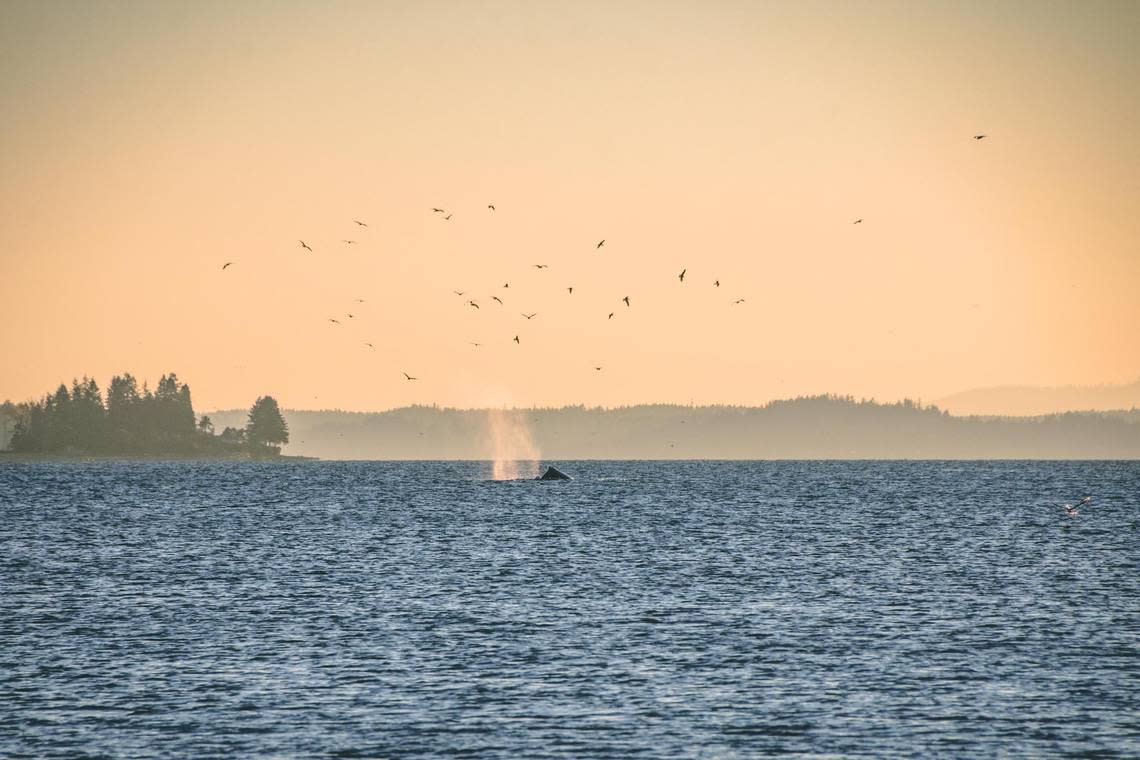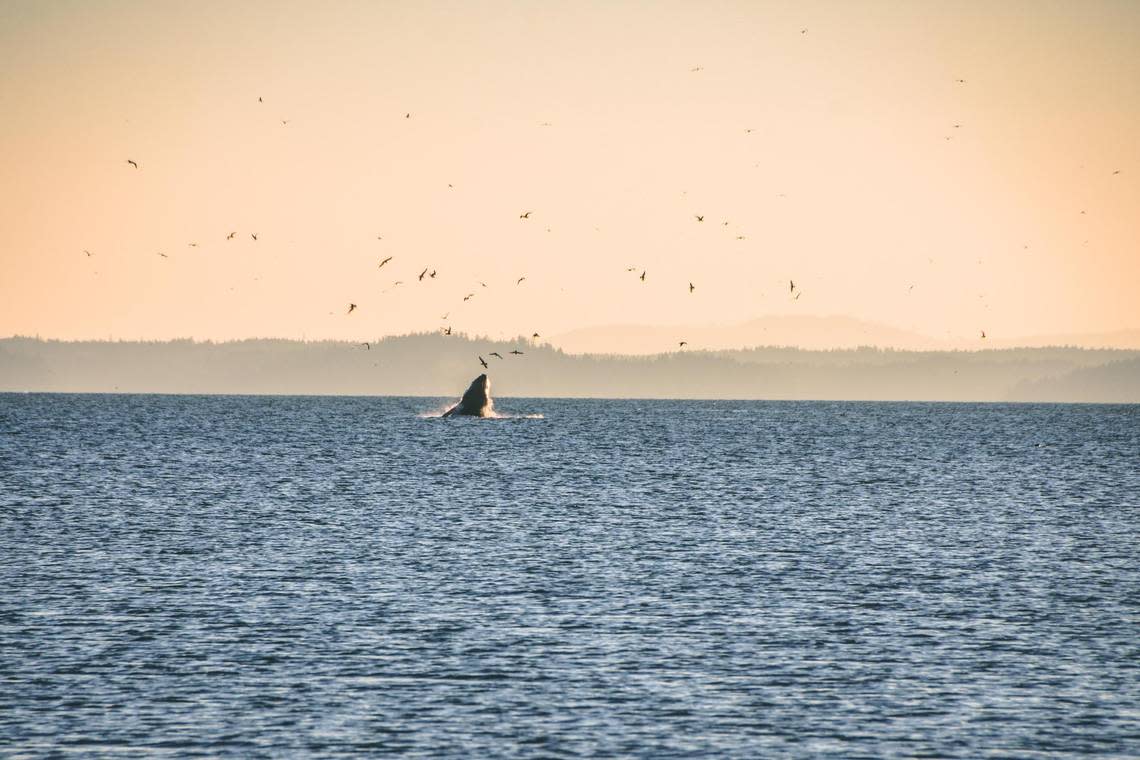A juvenile humpback whale is putting on a show in Pierce County. Here’s how to spot him
Whales aren’t uncommon in the Puget Sound and greater Salish Sea, but it’s a special sight when one (or a pod) spends time in our southern part of the estuary.
For a couple weeks, a humpback whale has spent time feeding around the Purdy Sand Spit as well as Raft Island and Fox Island. Identified as Malachite (CRC19820), he put on quite a show of tail lobs, lunge feeding, and breaches. For several days near Purdy, he was accompanied by a massive raft of sea lions launching through the water to feed on what looked like schooling herring in the area.
Humpback whales are found in oceans around the world and protected in the United States under the Endangered Species Act. They are known for traveling massive distances yearly from their feeding grounds in cooler waters to much warmer waters for breeding. According to NOAA, some humpbacks migrate from Alaska to Hawaii – a 3,000 mile trip completed in as few as 28 days. The longest known migration distance for humpbacks is 5,000 miles.
So, what is Malachite still doing in the chilly waters of the Sound? And why has he decided to stick around?
Orca Network (https://www.orcanetwork.org) keeps a tab on whales around the Salish Sea by presenting recent whale sightings, news, issues, and educational material on Salish Sea whales.

Notably, they are a wonderful resource for citizen-reported sightings around the Salish Sea.
Their accounts of Malachite note that he’s been feeding throughout inland Puget Sound since October. Prior to this, he was in Saratoga Passage for about six weeks.
Malachite was one of the record 21 calves born in the Salish Sea in 2021. His mom, BCX1201 Slate, was spotted around Vancouver Island in May 2021 with a baby Malachite swimming alongside (https://www.vancouverislandwhalewatch.com/recent-sightings/2021/5/26/may-25th-humpback-whale-slate-with-her-new-calf). Humpback whales are known to stay with their mothers from five months to a year, nursing on high-fat milk. At somewhere around a year and half old, Malachite is still a juvenile. In fact, according to NOAA, humpbacks don’t reach sexual maturity until 4-10 years of age (males often are on the latter half of that spectrum at 7-10 years old).

What’s a young humpback whale doing in Puget Sound this time of year?
This could be why Malachite has stayed in the Puget Sound feeding the last few months.
Several Salish Sea whale-focused groups have noted and observed young animals overwintering in the Salish Sea to feed. Since they aren’t old enough to breed, they stick around feeding grounds.
Humpbacks feed on krill (shrimp-like crustaceans) and small fish, straining enormous amounts of water through their baleen plates. These plates act like a sieve to filter out their food (think of straining pasta noodles in a colander). The South Sound – the Purdy Sand Spit in particular – has been rich with nearshore forage fish, presumably Pacific herring, in November. These fish spawn in the spring and in fall juveniles begin moving into deeper waters. A crucial part of the food web, herring feed on phyto- and zooplankton. They’re consumed by both marine and land animals (from invertebrates, fish, and marine mammals to birds, mink, and even black bears).

Notably, herring is a major food source for humpback whales and could be another reason why Malachite has stuck around the south Puget Sound lately.
Overwintering in Puget Sound isn’t without risks, though. As Salish Sea populations of humpbacks grow, so do ship strikes. Increases in shipping traffic throughout our region continue to pose a threat to humpback whales. While our state continues risk management, sharing, educating, and using our voice are ways to advocate for these creatures. And recreational boaters should always be Whale Wise (https://www.bewhalewise.org). Slow down to 7 knots within ½ a mile of whales and keep your distance (at least 100 yards).
To keep up with news and spotting Malachite, Orca Network reports sightings daily on their Facebook page (https://www.facebook.com/OrcaNetwork).

Carly Vester has been writing an environmental column for The Peninsula Gateway since 2019. Her storytelling focuses on the intersection of people and the outdoors — from adventures across the west, to our environment and the rich history surrounding it. Her documentary films have screened internationally and her writing has been published locally and regionally.
